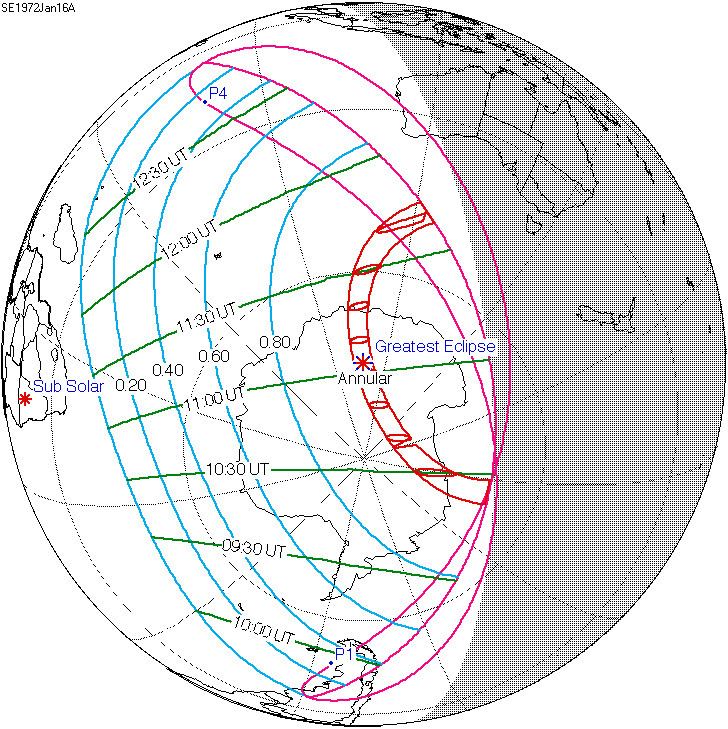Nature Annular Magnitude 0.9692 Max. width of band 321 km (199 mi) Start date January 16, 1972 | Gamma -0.9365 Duration 113 sec (1 m 53 s) Greatest eclipse 11:03:22 | |
 | ||
An annular solar eclipse occurred on January 16, 1972. A solar eclipse occurs when the Moon passes between Earth and the Sun, thereby totally or partly obscuring the image of the Sun for a viewer on Earth. An annular solar eclipse occurs when the Moon's apparent diameter is smaller than the Sun's, blocking most of the Sun's light and causing the Sun to look like an annulus (ring). An annular eclipse appears as a partial eclipse over a region of the Earth thousands of kilometres wide.
Contents
The areas included were the whole of Antarctica, a part of the southernmost portion of South America much of it in Argentina and a smaller part of Chile, much of it in the region of Patagonia, also it included New Amsterdam and the southern islands of the Indian Ocean,. The annular eclipse took place in western, southern and eastern Antarctica with its greatest eclipse in the eastcentral portion of the continent near the 75th parallel. The eclipse's edges were in Réunion and Mauritius, the eclipse was close to the island of Madagascar. The subsolar portion was in northcentral South West Africa (now Namibia).
Solar eclipses of 1971–1974
Each member in a semester series of solar eclipses repeats approximately every 177 days and 4 hours (a semester) at alternating nodes of the Moon's orbit.
Note: Partial solar eclipses on February 25, 1971 and August 20, 1971 occur in the next lunar year set.
Metonic series
The metonic series repeats eclipses every 19 years (6939.69 days), lasting about 5 cycles. Eclipses occur in nearly the same calendar date. In addition the octon subseries repeats 1/5 of that or every 3.8 years (1387.94 days).
